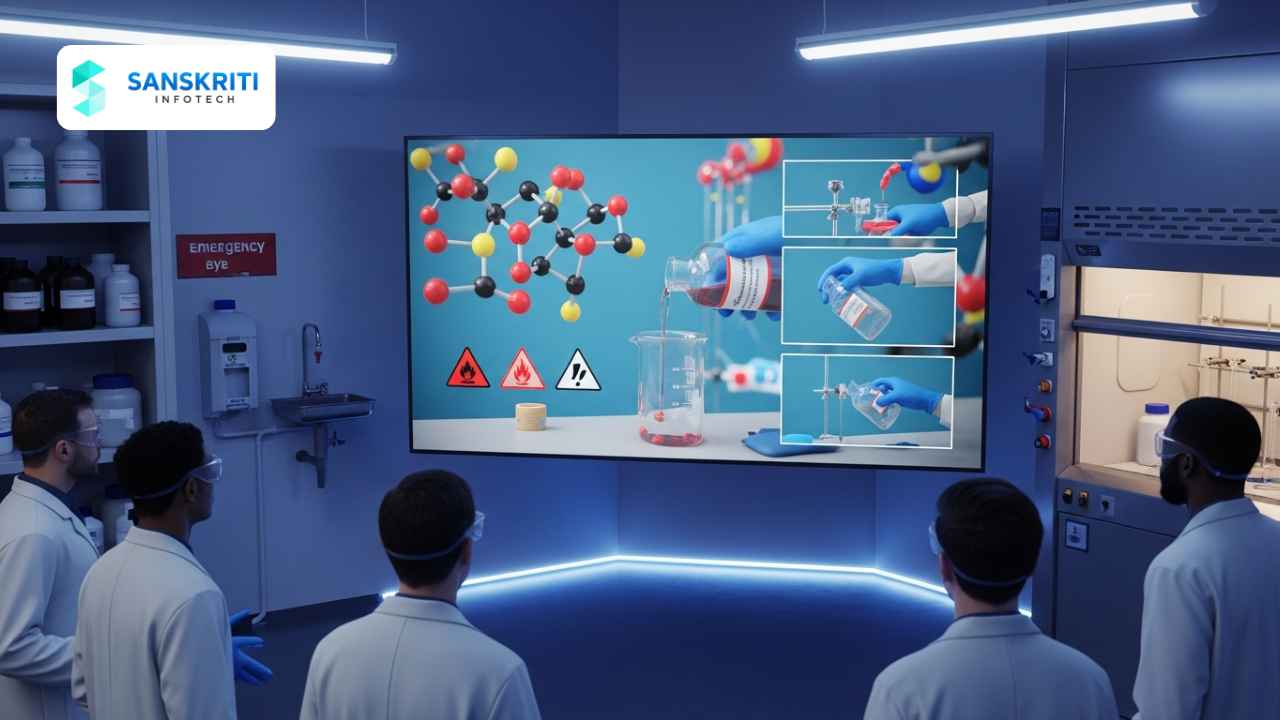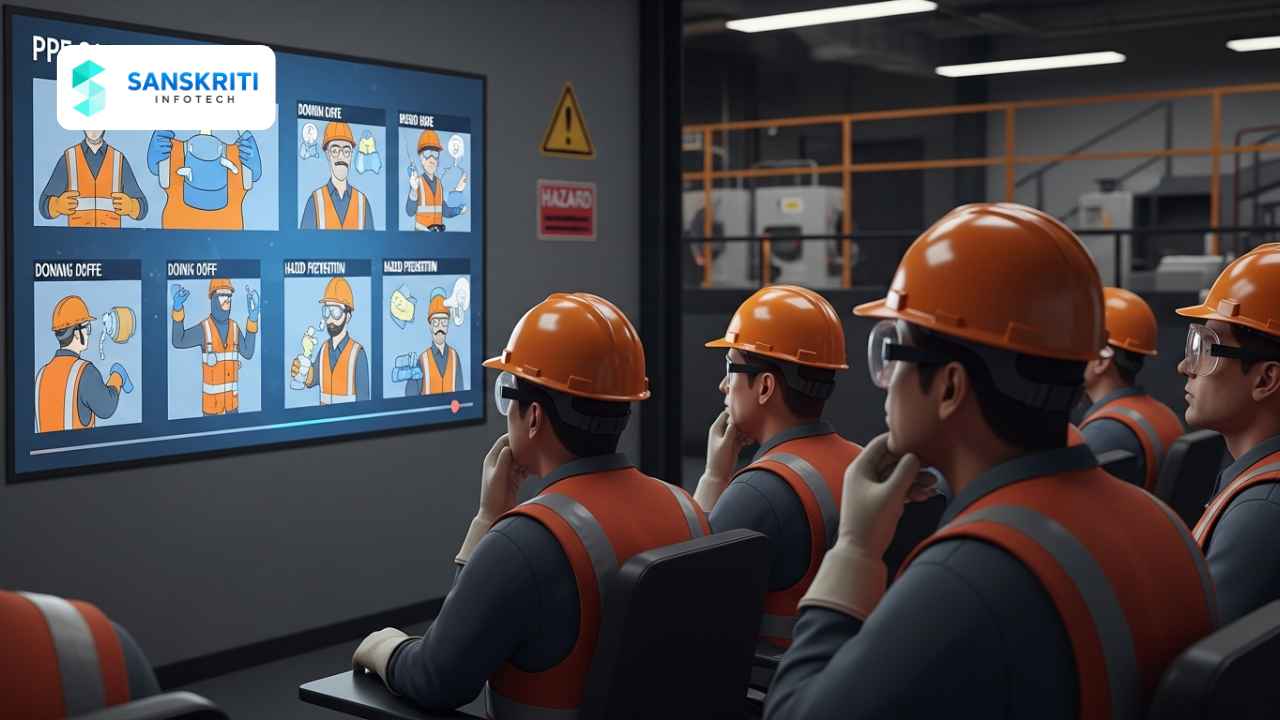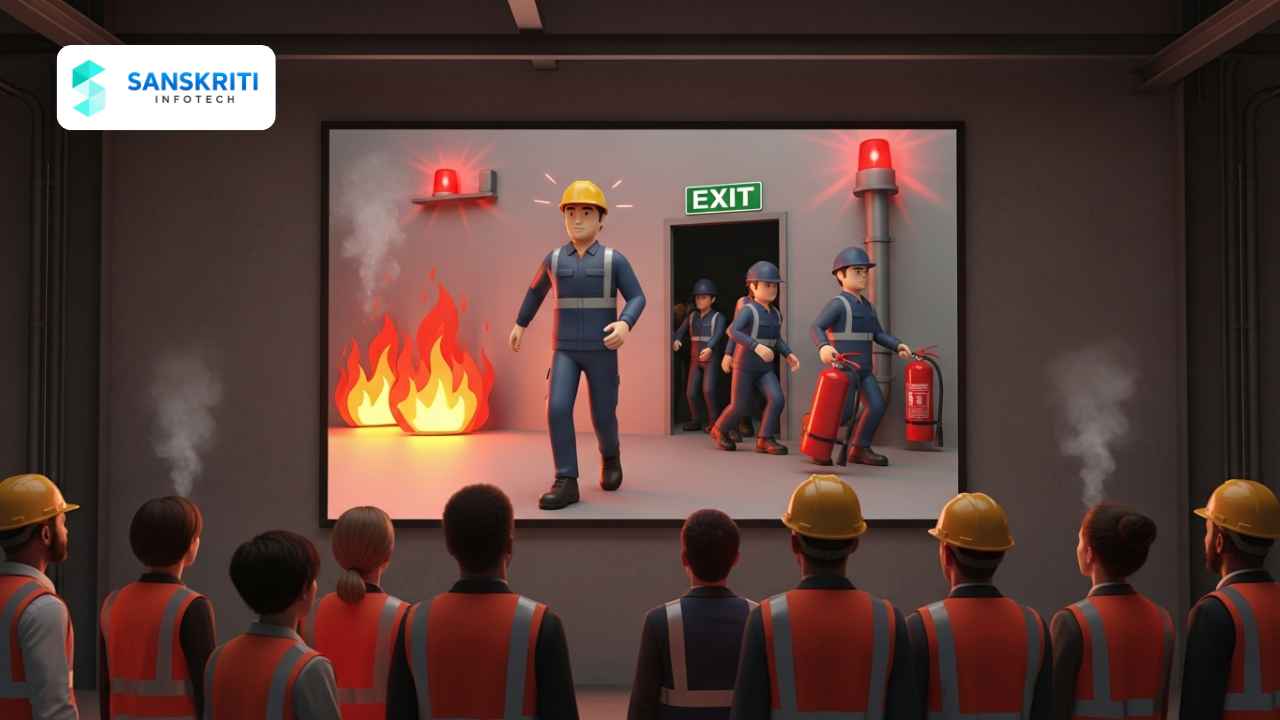Table of Contents
Introduction
Chemical Safety Training Videos play a crucial role in helping employees understand the risks associated with handling, storing, and disposing of hazardous substances. Traditional chemical safety sessions often rely on dense manuals or technical lectures, which can overwhelm trainees. Animated training videos transform these complex safety guidelines into engaging, easy-to-understand visuals that improve comprehension and retention. Sanskriti Infotech specializes in creating customized chemical safety animations designed for industrial, pharmaceutical, and laboratory environments.
1. Importance of Chemical Safety Training
Chemical safety training is vital for ensuring worker protection and regulatory compliance. It educates employees on hazard identification, safe handling procedures, and emergency response actions. According to occupational safety data, more than 30 percent of industrial accidents are linked to chemical exposure or improper storage. Animated safety training helps bridge this gap by providing interactive visual demonstrations that clarify each step of the process. For regulatory guidance, visit OSHA hazardous materials.
2. Limitations of Conventional Training Methods
Conventional chemical safety programs often depend on text-heavy material and theoretical explanations. These formats struggle to capture attention and make it hard for employees to visualize real-world chemical reactions or spill responses. By contrast, animated safety videos show exactly how chemicals behave when mishandled and the right way to neutralize hazards. This practical understanding significantly reduces risks in chemical plants and laboratories. Learn scientific insights on chemical hazards at NIOSH hazchem topics.
3. Power of Animated Chemical Safety Training Videos
Animated videos combine storytelling, visuals, and voiceovers to make chemical safety procedures memorable. These animations demonstrate correct PPE usage, labeling standards, and emergency containment measures. They also help standardize training across global facilities by removing language barriers. Sanskriti Infotech’s 3D chemical handling animations are built using real facility layouts to ensure accuracy and contextual relevance.
4. Key Topics Covered in Chemical Safety Animation
- Material Safety Data Sheet (MSDS) interpretation
- Proper labeling and segregation of chemicals
- Personal protective equipment (PPE) usage
- Spill response and emergency shutdown procedures
- Fire and explosion prevention
- Waste management and environmental compliance
Each concept is demonstrated visually, ensuring workers understand both the procedure and its importance. For environmental safety guidelines, refer to EPA hazardous waste.
5. Applications Across Industries
Chemical safety training through animation benefits multiple sectors, including pharmaceuticals, manufacturing, and healthcare. In pharmaceutical plants, employees must follow cleanroom protocols and avoid cross-contamination. Manufacturing units require clear guidance on safe mixing and storage of chemicals. In laboratories, animations simplify chemical reaction safety and fume hood operations. Sanskriti Infotech designs content tailored to each industry’s compliance standards and operating procedures.
6. How Sanskriti Infotech Creates Customized Chemical Safety Animations
Sanskriti Infotech develops fully customized chemical safety videos by following a proven production pipeline:
- Research and scriptwriting aligned with MSDS and OSHA guidelines.
- Storyboarding to visualize chemical handling processes.
- 3D modeling and animation based on real equipment layouts.
- Multilingual voiceovers and subtitles for global accessibility.
- Final QA to ensure technical accuracy and compliance with safety regulations.
This structured process ensures every video communicates safety procedures clearly and effectively.
7. The Future of Chemical Safety Training
In the near future, technologies like Virtual Reality (VR) and Augmented Reality (AR) will make chemical safety training even more immersive. Trainees will be able to simulate chemical mixing, spill containment, and PPE selection in controlled virtual environments. NFPA codes and standards connect fire safety with chemical handling. Sanskriti Infotech is actively integrating VR modules into chemical safety training programs to enhance learner engagement and improve recall through experiential learning.





